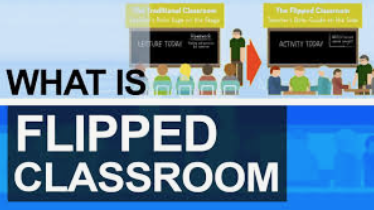Flipped Classroom Learning

BY COURTENEY MALIN – Learning in Healthcare and Science—The Flipped Classroom
Flipped classrooms employ a modern method of learning, gaining popularity from media coverage and research showing its benefits in the science classroom. However, many students still struggle learning new material in this environment, reporting difficulties learning lecture content at home, not being able to ask questions while learning the lecture material, and having to spend more time learning the material outside of class.
What is the Flipped Classroom?
The flipped or reverse classroom consists of interactive activities or discussions in class and lectures outside of class. Professors and teachers do not lecture during the class and usually provide activities, such as case studies, practice problems, or discussion topics, to complete during the class. These activities allow the student to ask questions about the problems and correct misunderstandings that they would normally encounter at home. In the flipped classroom, the teacher or professor acts as a facilitator of learning tools rather than a lecturer. They provide videos, audio files, links, and assigned readings to students for them to complete at home. The at-home assignments act as the lecture content of the course.
When is the Flipped Classroom Used?
The flipped classroom was invented by two high school teachers in 2007 for an introductory chemistry course. The style increased in popularity, and universities began to employ it in their classrooms, studying its effects on student learning and performance. Most research focuses on its effects in science courses, specifically chemistry and computer sciences. However, its scope has increased beyond the introductory science course. A student can experience the flipped classroom method in literature, reading, math, and language courses. Nevertheless, the reversed classroom usually functions best in science courses to improve conceptual learning.
How to Learn in a Flipped Classroom:
Unsurprisingly, researchers have determined that students who participate actively in class will receive the highest grades in a reversed classroom setting. Answering questions and engaging with other students improves student performance and learning. However, there are other opportunities for students to learn in a flipped classroom environment. Students who learn the concepts rather than the fine, specific details receive higher grades on exams. For example, a person could memorize all the lyrics to a song and recite them on demand, but do they understand why the artist wrote the song, how each lyric forms an idea, and what story or problem the artist is conveying? Students often memorize the details, believing the details include the overall concepts, but the students never connect the concepts or find the relationship among them. Students know the specifics but lack the ability to apply them.
In addition, students should focus on the in-class assignments and use their out of class lectures as a guide to understanding the in-class material. Professors and teachers craft the in-class assignments for student learning, so they tend to have focused topics, regarding what information is important to understand. Students, finding themselves confused in class, can slowly review the out-of-class assignments, comparing them to in-class activities to connect concepts.
How to Manage Time in a Reversed Classroom:
Flipped classrooms require much more time than the traditional classroom. Of course, this extra time spent learning the material increases student performance, but students often do not have this extra time if they want a balanced schedule. Mind maps, diagrams, drawings, and images save time and help students learn. Any media that involves the student narrowing down information into a concise and memorable learning tool will improve concept memorization and will help the student learn the information long-term.
Success in the Flipped Classroom
After experiencing one reverse classroom environment, students understand the techniques and new learning behaviors that they must use to be successful in the reverse classroom. The reverse classroom may seem challenging at first since there is an emphasis on student participation and individual study. However, if students use the provided materials wisely, the flipped classroom can be a manageable and interactive way to learn science.
Editor: Morenike Isola
Photography Source: Ushna Syed
